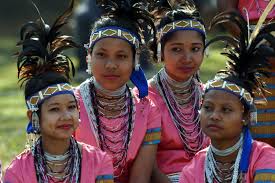Part 10 of Indian Constitution the Scheduled and Tribal Area
Part 10 of the Indian Constitution deals with The Scheduled and Tribal Area, Under the constitution article 244A formation of an autonomous State comprising certain tribal areas. The Scheduled Areas were first notified in 1950. First Scheduled Areas in Rajasthan were issued in 1981.
5th Scheduled: The provisions of the fifth schedule will apply to the administration and control of Scheduled Area and Scheduled Tribes in any state except Assam, Meghalaya, Tripura and Mizoram.
6th Scheduled: The provisions of the Sixth Schedule will apply to the administration of tribal areas in Assam, Meghalaya, Tripura and Mizoram.
Administrative work of Schedule Areas:
The constitution empowers the President to declare any areas as scheduled area. The president can increase or decrease its area or alter its boundaries. He can cancel such designation after consultation with the governor or can make fresh orders redefining the schedule areas. The governor of each state having scheduled areas annually, or whenever required by the president, make a report to the president regarding the administration of the scheduled areas in that state.
Laws and Rules in Schedule Areas:
1. The governor has the right to take direct action that no special act of Parliament or state legislature does not apply to scheduled areas.
2. Regulate the allotment of land to members of the scheduled tribes in such area.
3. Regulate the carrying on of business as money-lender by persons who lend money to members of the scheduled tribes in such area.
4. The Governors of the State in which there are “Scheduled areas” have to submit reports to the President.
5. The Governor is also authorised to make regulations to prohibit or restrict the transfer of land by, or among members of the Scheduled Tribes.
6. The Constitution provides for the appointment of a Commission to report on the administration of the Scheduled Areas in the state.
Administrative work of Tribal Areas:
The Sixth Schedule deals with the administration and control of the tribal areas in the states of Assam, Meghalaya, Tripura and Mizoram. It provides for autonomous districts and autonomous regions. Governor can increase, decrease, re-organise or alter the boundary of these districts.
Autonomous Districts:
Governors of four states viz. Assam, Meghalaya, Tripura and Mizoram are empowered to declare some tribal dominated districts/areas of these states as autonomous districts and autonomous regions by order. No separate legislation is needed for Scheduled area and Tribes.
Creation of autonomous district:
Article 244 and 275 make provision for the creation of the District Councils and regional councils. Each district / regional council is a body corporate which is empowered for the administration of the area under its jurisdiction.
Members of autonomous councils:
District councils or regional councils have a maximum of 30 members, in which 4 members will be nominated by the governor and the remaining elected by the universal adult franchise. However, there is an exception in this rule. The current provision is that there can be 46 members in the Bodoland Territorial Council and 40 of these are elected on the basis of adult franchise. 30 seats are reserved for Scheduled Tribes. 5 seats reserved for non-tribal communities. 5 seats are unprotected. 6 members are selected by Governor.
Important Article under Scheduled and Tribal Area:
1. Article 244: Administration of Scheduled Areas and Tribal Areas.
2. Article 244A: Formation of an autonomous state in which some tribal areas are included in Assam and the construction of both the local Legislature or Council of Ministers.
The Scheduled and Tribal Area – MCQ’s
1. Which of the following states is not included in the sixth schedule of the Indian Constitution?
A. Meghalaya
B. Tripura
C. Mizoram
D. Manipur
[toggle] Answer – D [/toggle]
2. Which is the state with the highest proportion of scheduled tribes as per 2001 census?
A. Chhattisgarh
B. Goa
C. Mizoram
D. Punjab
[toggle] Answer – C[/toggle]
3. Which Schedule of the Constitution of India contains special provisions for the administration and control of Scheduled Areas in several States?
A. Third
B. Fifth
C. Seventh
D. Ninth
[toggle] Answer – B[/toggle]
4. Under which article administration of scheduled tribes is described:
A. Article 243
B. Article 244
C. Article 245
D. Article 246
[toggle] Answer – B[/toggle]
5. Provisions of the Constitution relating to the administration of scheduled areas and tribes in Schedule V:
A. May be altered by the Governor
B. May be altered by Parliament by an amendment requiring a two-thirds majority
C. Cannot be altered
D. May be altered by Parliament by ordinary legislation
[toggle] Answer – D [/toggle]
6. The Governor of which State has been vested with special powers regarding scheduled tribal areas?
A. Arunachal Pradesh
B. Asom
C. Maharashtra
D. West Bengal
[toggle] Answer – A[/toggle]
7. There is no reservation for the Scheduled Tribes in the Legislative Assemblies of:
A. Punjab, Gujarat and Himachal Pradesh
B. Punjab, Asom and Nagaland
C. Nagaland, Meghalaya and Orissa
D. Assam, Nagaland and Meghalaya
[toggle] Answer – A[/toggle]
8. How many seats are reserved for the Bodoland Territorial Council:
A. 30
B. 32
C. 40
D. 46
[toggle] Answer – D [/toggle]
9. The Sixth Schedule deals with the administration and control of:
A. Tribal areas
B. Scheduled areas
C. Union Territory
D. State of India
[toggle] Answer – A[/toggle]
10. In which part of Indian Constitution discuss the Scheduled and Tribal Area:
A. Part 9
B. Part 9A
C. Part 10
D. Part 12
[toggle] Answer – C[/toggle]


